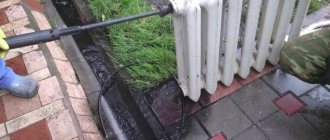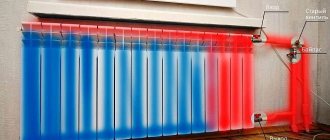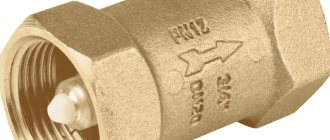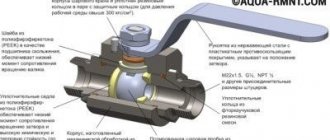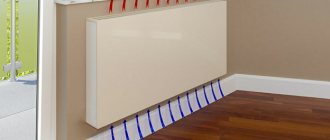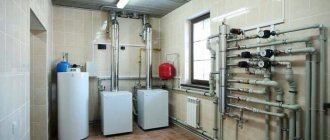The coolant circulating in the heating radiators provides us with heat during the cold season. However, situations often arise in which the battery does not warm up completely. They arise due to the accumulation of air in the far part of the radiator, which prevents the radiator from filling with hot water. Therefore, it needs to be removed somehow. For this purpose, a Mayevsky valve is used, the operating principle of which is based on bleeding air pockets when the shut-off cone valve is loosened.
The Mayevsky tap is installed at the top point of the heating radiator. It can be controlled automatically or manually. When the valve is opened just half a turn, the air in the system comes out of it, freeing up space for the coolant. This device is used on all types of radiators, including old ones.
Design and principle of operation of the mechanism
The author of the effective and quickly gaining popularity device is the Belarusian plumber Roev.
In 1931, he designed a valve that allowed radiators to bleed air without unnecessary effort. But the design currently in use is an improved model of the bleeder valve. Engineer Ch.B. Mayevsky improved the invention of the worker Roev.
The device has improved sealing due to the “cone-in-cone” needle valve design. According to GOST, the name of the mechanism is a needle radiator air valve.
The device is controlled by a locking screw, which is adjusted from the outside, or by a screwdriver. In the closed position, the valve holds the coolant inside the battery.
When turning, a hole opens and air comes out through it.

Main parts of the crane:
- housing with inlet calibration and outlet drain holes,
- cone needle valve,
- sealing ring,
- valve or locking screw with a socket head or screwdriver.
When is a Mayevsky valve needed?
The Mayevsky valve is a “cone-in-cone” connection, and between them there is a gasket and a cross-shaped key. There is a small hole in the case for air to escape. This is, in fact, the simplest diagram of the device of this valve. Do you need to figure out exactly how the tap or Mayevsky valve works?
At low water speed and low pressure in the heating system, air accumulates in one place and air pockets appear there. They prevent the circulation of water in the system. Air also enters the system during long periods of downtime (summer, unheated periods). And therefore, when supplying heat to the system in the fall, the air must be displaced with water under greater pressure than provided.
If this fails, it is necessary to forcefully remove air from the system.
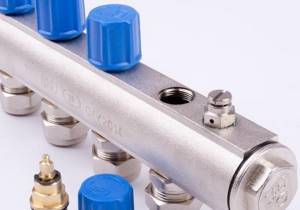
This is why the Mayevsky valve is needed. The heating system remains under increased pressure, and at the same time it is necessary to release air through an air vent at the upper level of the system, including in cast iron radiators - the basic principle of operation of the valve.
Pressure control is also necessary in sewerage systems. For this purpose special valves are used. You will learn more about the principle of operation and design in our material:.
Air locks can also occur in the sewerage system, to eliminate which special valves are used. You can find out more at
How to determine that you need to use the Mayevsky crane:
- The coolant is hot;
- The batteries are cold;
- Characteristic sounds in the coolant.
This means that there is an air lock or several of them somewhere in the system and it is necessary to remove them from the system. What types of Mayevsky cranes are there? There are several of them, and we will consider them all in more detail.
Types of devices
The design of the crane is different in individual modifications, but the principle of operation is identical. The classification is based on the location and principle of control of the mechanism: automatic or manual.
The following types of valves exist:
- Classic with carving . Installed on any part of the system if the circuit is tortuous. For installation, drill a hole and cut an internal thread. The descent is controlled manually in this model.
- Radiator . Metal tap with plastic cap. To bleed air, simply turn the handle and then return it to its original position. Modern radiators are often sold already equipped with valves.
- Ball . Mechanism for manually controlled hybrid heating systems. Instead of a screw, they have a rotating ball with an internal hole.
- Automatic . Equipped with a cylinder with a built-in float. When the cavity is filled with air, it is automatically released. The loss of pressure causes the float to move upward, as a result of which the outlet is blocked and the coolant does not drain. But this design is suitable for clean water. Centralized networks contain dirt, so installing automatic valves in them is problematic. Such mechanisms are installed in the home heating network, where the water is filtered.
- With safety valve . It is triggered automatically when the permissible pressure in the system is exceeded, which threatens pipe rupture. Typically these are above 16 bar. Installing such a device is especially important for a home system made of plastic pipes.
Bleeding air from the autonomous system can only be done when the circulation pump is turned off. When the pump is turned on, the air will not rise to the top of the radiator, but will be spread throughout the system and will not enter the valve.
How to choose the right Mayevsky crane
Automation is tempting, however, buying a Mayevsky crane with an operating mechanism that does not require human intervention is not always rational.
How to choose the right one: Old equipment = dirty coolant Important! Central heating must be able to clear the taps from gaps, otherwise incorrect operation is guaranteed. The ball valve handle should rotate freely. The drain check valve will save plastic pipes from water hammer. The price of Mayevsky cranes is insignificant in comparison with the benefits of the mechanism.
Selecting a valve based on technical parameters
The standard sizes of Mayevsky taps are 15 and 20 mm, ½″ and ¾″ - corresponding to the diameters of the pipes and the top points of the radiators. The operating pressure of private home heating is 10 bar, in an apartment building - up to 16 bar. In both cases, devices must be purchased with a pressure reserve, taking into account possible differences and water hammer.
Criterias of choice
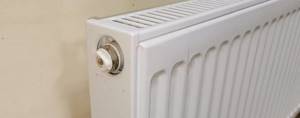
To decide whether the installation of a Mayevsky tap is necessary, consider whether the air can independently escape from the pipes and heating radiators. Consider the laws of physics: air can only flow upward from pipes and radiators. Based on this parameter, you can choose which device is better.
To select a suitable model, you should also take into account the material of the pipes, the availability of free access to the installation site and the nuances of servicing the mechanism.
Basic expert advice on selection criteria:
- In houses with centralized heating, it is advisable to install manual models or taps with fuses, which will help protect the system from water hammer. To prevent clogging, automatic taps can be installed in home systems where purified coolant circulates.
- Even in a home system, only manual taps can be installed on cast iron batteries.
- For plastic pipes, choose models with a fuse. This protects the mechanism from damage due to water hammer.
- In hard-to-reach places, it is worth installing an automatic model or a manual faucet with a valve.
- When purchasing a valve, it is important to pay attention to the material from which it is made. The design with a brass body will last the longest: this material is resistant to corrosion.
- The type of product, maximum load and compliance with the type of communications are reflected in the documentation for the model, so it is important to study the instructions when purchasing.
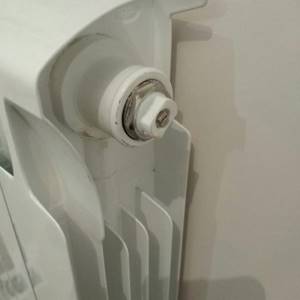
Mayevsky taps with valves should not be installed in rooms where there are small children!
The fundamental difference between automatic and manual valve types
Mayevsky's automatic faucet is structurally similar to an air valve with a float. It is connected by a lever to the core, which blocks the outlet passage. The position of the float is adjustable; in the absence of air, the tap is filled with coolant, pushing the float upward. When the valve is filled with an air mixture, the float sags, weakening the effect on the core. At the same time, the hole releases air.
This module works independently and does not require human intervention to operate it. The float model is the best prevention of “de-airing” of the heating system, which independently regulates the closing and opening of the valve. The product has a significant drawback - it is sensitive to clogging and requires occasional cleaning, which is not very convenient to do during the heating season. The device is suitable for a closed housing in the private sector, where the coolant is cleaner.
Installation Rules

You need to select a mechanism that matches the diameter of the radiator plug. Currently, Mayevsky taps are produced with 1⁄2-inch, 3⁄4-inch and 1-inch threads. To install, remove the plug and screw the tap into its place.
When screwing in the faucet, install it so that the air vent hole is directed downward, at approximately an angle of 45 degrees.
This is advisable to make it more convenient to collect water after bleeding the air. To protect against leakage, additionally use linen winding or FUM tape.
Please note the following during installation:
- In a vertical thermal circuit, the mechanism is mounted in radiators on the top floor and on devices connected to the riser below the heating axis.
- In a horizontal system, taps must be installed in all devices. Complex network weaves will require several automatic and mechanical devices.
- The highest point in the floor radiator is selected, and the tap is placed with the screw facing up.
- Automation is installed in hard-to-reach places.
- Automatic taps are sensitive to temperatures that are too high. If the coolant heats up above 150 degrees, then it is preferable to choose a mechanical faucet.
- In heated towel rails with a bottom connection, the design provides space for installing a tap. In a model with a side connection, a tee is first cut in, and an air vent is mounted into it. It is advisable to equip a heated towel rail with a complex shape with several valves.
- When installing the valve, note that the plugs have left-hand threads. During dismantling, it is better to hold the plug with a gas or adjustable wrench so that it does not begin to unscrew along with the tap. To simplify the work, it is better to completely disconnect the cast-iron battery from the system and select a valve with a minimum external thread diameter.
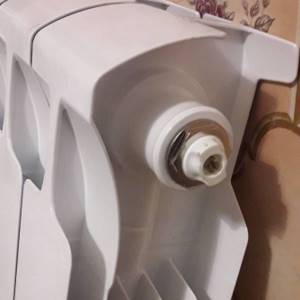
Any alteration of the design of a centralized heating system that is not specified in GOST or SNiP must be agreed upon with the service organization. Otherwise, you put yourself and your neighbors at risk of emergency flooding.
The nuances of installation in a cast iron battery
Installing a faucet in an old-style radiator has some difficulties. Many craftsmen create a homemade faucet. Drill the fitting, cut the thread and screw in a simple bolt. The option is primitive and inconvenient, since when the bolt is loosened and air is released, an uncontrolled leak will form.
Therefore, it is more advisable to install the Mayevsky tap without unscrewing the stuck fitting:
- Buy a tap with a landing thread M 10 x 1 and prepare taps No. 1 and 2. A machine tap will not work, since cast iron is hard and the tool will break.
- Drain the water from the radiator and drill the top plug with a thin drill (5 mm), then break it with a drill with a diameter of 9 mm.
- Remove the chamfer. Cut the thread using taps No. 1 and 2 alternately.
- Seal the threads with flax, tighten and tighten the tap.
Do not drill cast iron or cut threads “dry”: this will quickly dull the working edge. Periodically lubricate the tool with machine oil,
Installing a Mayevsky tap on a cast iron radiator
A common reason for incomplete heating of radiators or poor water pressure is air locks. The Mayevsky valve is designed to bleed air in a heating or water supply system. The principle of operation of the valves is clear and the same - together with a small amount of media, atmospheric accumulations come out, freeing up space for heated water. However, today there are a large number of their varieties, prices and designs, which we will discuss in detail in this review.
Cold areas of batteries are a sign of air accumulation. However, the types and operation of models vary. Self-installation also requires detailed instructions. About everything later in the article.
How to deflate
Procedure:
- Place a container under the tap to collect the flowing water.
- The locking screw is turned counterclockwise 90-180 degrees.
- Air will begin to escape from the battery with a characteristic hissing sound.
- As soon as water flows from the hole and the pressure stabilizes, the screw is turned in the opposite direction. Uniform flow means that there is no air left in the pipes.
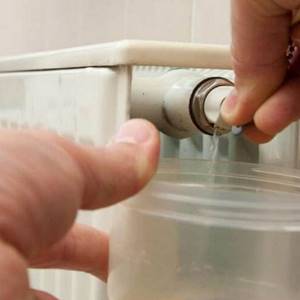
If after lowering the batteries do not begin to warm up completely, it means they are clogged. You shouldn’t fix the problem yourself; it’s better to turn to specialists.
What is it and what is it for?
This is a shut-off valve of a very simple and reliable design for releasing air from a closed system, manually controlled. It has existed for almost ninety years and is used almost in its original form to this day.
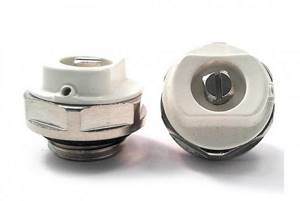
Its other names are: radiator needle air valve, air bleed valve, the most common is the Mayevsky valve. In textbooks, the name radiator needle air valve is usually used.
Rules of service
Uninterrupted operation of the drain valve is possible only if the rules for its operation are observed:
- To bleed air, open the tap. If the air flow does not stop after a few minutes, it means that there is an additional suction in the system. To check the tightness, take a thin sheet of paper and pass it around all the joints. In places where there is suction, the sheet will be drawn to the joint.
- If the exhaust channel is dirty, clean it with a thin needle or wire.
- With infrequent use, the faucet becomes corroded and stops working. To correct the situation, treat the faucet with WD-40. For preventive purposes, after the end of the season, the threads should be treated with silicone grease.
- The faucet cannot be repaired and must be replaced if broken. Dismantling must be done using an auxiliary adjustable wrench to fix the radiator cap. Otherwise, the radiator itself may be damaged.
When using an ion boiler with a closed coolant circulation system, the faucet will not last long. A brine solution is added to the coolant for such a system to ensure the acceleration of ions in the boiler. When bleeding air, salts will be deposited inside the valve, which will lead to failure. For ion boilers, devices are provided that are resistant to salt.
Specifications
The main technical parameters of this device include:
- maximum permissible operating pressure and temperature in the heating system;
- connecting thread size;
- material of manufacture;
- type of management.
Most Mayevsky cranes are designed for operating pressures up to 15 atm. and coolant temperature up to 120°C .
The size of the external pipe thread by which the device is installed on the radiator is standardized and can be half an inch, three-quarters of an inch, or an inch.
There is a special modification for old cast iron radiators with a small body diameter and an external metric thread, with which the valve is screwed into the radiator plug (plug).
The material is metal with anti-corrosion properties (most often brass or steel with a chrome or nickel coating).
To control the tap, a regular screwdriver, a special four-sided wrench or a thumb-type handle can be used.
Questions and answers
Mayevsky's tap broke and several apartments were flooded. Who will be responsible: the owners of the apartment or the management company?
If the tap was not on the riser (or it was the first shut-off device after the riser) and was installed without approval, then the owner is responsible for it, according to Art. 210 of the Civil Code of the Russian Federation.
If the batteries are hot on top and very cold on the bottom, does it make sense to install a Mayevsky valve to bleed air?
Installing a faucet only helps remove air. If the battery is not connected correctly (this happens with a top connection) or is clogged, this procedure most likely will not help.
Mayevsky's faucet is leaking. How to fix?
A special seal is responsible for the tightness of the valve, and wear may be the cause of the leak. In this case, you will need to replace the seal or the entire valve. If drops occur in the thread area, the tap must be tightened with a wrench for a tighter fit. The leak may be due to a blockage.
I open the tap, but there is no air or water. What is the reason?
If the heating system is working properly and there is enough coolant inside, the reason is that the tap hole is clogged. It needs to be cleaned or the tap replaced.
Installing a Mayevsky crane on a heating system significantly simplifies its operation and increases operating efficiency.
The installation process is not complicated and can easily be done with your own hands. But selecting the appropriate valve model requires the use of some knowledge, so it is better to consult with specialists. During operation, it is important to follow the rules and periodically carry out preventive maintenance to maintain the functionality of the mechanism.
Scope of application and types of cranes
Mayevsky manual valves are used for the following purposes:
- First of all, removing air bubbles from heating radiators of all types - aluminum, steel and cast iron.
- Venting air from heated towel rails.
- Periodic de-airing of problem areas of the heating network - expansion joints turned upward, bypass loops (for example, above the front door), risers and other places where air accumulates.
Installation of air bleed valves is provided by all manufacturers of modern radiators. Heating devices are supplied from the factory with fittings (plugs) with a hole for the Mayevsky valve. The battery valve is selected according to the diameter of the external pipe thread - G¼”, ½”, ¾”.
Reference. The G¼” external thread of the air valve is identical to that of a standard pressure gauge.
If you need to organize air bleed in a problem area of the system, buy a Soviet-style valve with an external metric thread M10 x 1. The pipe wall is drilled with a Ø9 mm drill, the thread is cut with a tap, then a Mayevsky valve is screwed in and the joint is sealed with plumbing flax.
Another option is to cut a tee into the main line and install a slotted valve on the outlet pipe, as done in the photo below. The method will help with a cold (air-filled) heated towel rail that does not have a thread for an air vent.
Some models of heated towel rails have a slot for an air vent (photo on the left)
The operating principle of all Mayevsky valves is the same, but commercially available products may differ in design:
- The shut-off valve is made for a slotted screwdriver, a special key, or equipped with a handle. The old version of the product uses a hex head bolt.
- The needle (cone) that covers the hole can be metal or plastic.
- The corresponding “aged” valves shown in the photo are installed on designer cast-iron batteries.
Faucets with a handle are convenient to use - the air can be easily released without any tools. On the other hand, anyone can turn the valve, including small children, which should not be allowed. Hence the recommendation - buy and install traditional products with a slot or a tetrahedral key.
Retro-style valves for designer batteries (left) and a small 1/4-inch “air vent” for a ball valve (right)
Reference. Manufacturers equip some models of ball valves with Mayevsky air vents. Here the option with a handle is more appropriate, and the valve with a G¼” thread can be removed and replaced with a pressure gauge or a plug can be installed.
Do not confuse “Mayevskie” with automatic float-type air vents. The latter are similar in principle of operation - the passage hole is also closed with a needle, but air is removed without human intervention. There are 2 types of such devices - universal (used in boiler safety groups) and radiator ones.
Valves for automatic air release - radiator and universal
When to bleed air from batteries
Any gas is much lighter than water, and therefore, when it enters the radiator, it begins to accumulate at the top point. If the process continues, the air begins to expand and lower the water level. As a result, 50% of the radiator volume or more may remain without water. The heating device practically stops functioning. Therefore, it is necessary to bleed the air from the batteries in any case.
To know when you need to bleed air from a heating radiator in an apartment in a multi-story building, you need to understand when it most often gets there. This occurs under the following circumstances.
- At the end of the heating season in the summer, heating services carry out preventive measures, during which the coolant is drained from the system, both partially and completely. Before the onset of cold weather, new water is poured into the system. Along with it, gas mixtures enter the radiators.
- Owners of private houses often repair their own autonomous heating system in the summer. As a result of inept actions, air enters the heating system.
- In apartment buildings with cast iron radiators, water is specially drained in the summer. This is done to avoid work on replacing gaskets between the registers. If coolant is left in the system, then old radiators may leak at the junctions of sections due to water cooling and pressure drop. When you have to start the heating system again, a large amount of air will enter it.
- During the summer period, the volume of coolant noticeably decreases in volume. When the shut-off valves are opened, due to negative pressure, the water being poured in absorbs gases and fills all risers with them.
Step-by-step instructions for installing KM into the system
At the first stage, preparatory work is carried out. It is advisable to carry out the installation in the warm season, when it is possible to remove coolant from the heating system. Often in old radiators there is no special hole for the CM, so it must be drilled.
- At the first stage, the pipes are removed.
- Remove the radiator from the hooks and completely drain the water.
- On the side opposite from the pipe entrance, a hole is drilled in the top plug, the diameter of which corresponds to the purchased CM.
- The threads are cut inside according to the one used on the KM. It should be taken into account that the tap has a right-hand thread, therefore, the plug has a left-hand thread. Another option is to replace the entire plug at once.
- Then install the tap, as indicated in the instructions for the device.
- The battery is returned to its place.
- At the last stage, the pipeline is connected.
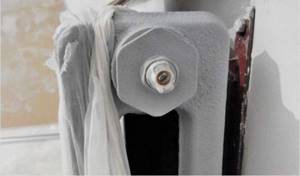
The outlet hole of the valve is directed slightly downward. This makes it easier to collect the water that should flow from the tap.
When installing the device on heating pipes made of plastic, a fitting will be required.
Attention! Valves with manual control are usually installed horizontally, automatic valves are installed vertically. The correct installation must be clarified in the instructions.
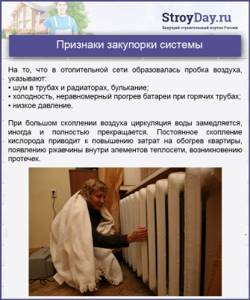
Signs of system blockage





